King Arthur is an empire-building strategy game set in a medieval, mystical Britain where you will play the role of legendary Arthur, the Once and Future King. You build Camelot, enlist the Knights of the Round Table, unite the country and ultimately challenge the powers threatening the essence of all their previous endeavors. You choose their own path, be it the way of virtuous glory, the might of the Sidhe or your wish to succumb to the dark powers.
Q: What will happen in King Arthur? What will I do?
A: King Arthur is a Role-playing Wargame, where you will play the role of the legendary King Arthur and conquer the warring provinces of Britannia until you unite the realm. Meanwhile you will have to recruit the fabled Knights of the Round Table and send them to heroic adventures and knightly quests.
Q: You call your game "the Role-playing Wargame". Could you please comment upon this statement? What particular element of an RPG do you use and won’t it interfere with the strategic part of your game?
A: In the game you are King Arthur and you command whole armies and heroes. While the heroes lead the armies, besides the gradually unfolding storyline they explore the land of the mystical Britannia – meaning that you send them to battles to conquer provinces, which add up to a growing realm that has to be managed by passing laws and developing cities – they are also the main characters of the game. These Knights of the Round Table gather experience, develop abilities, participate in adventures (where they have their own influence on the outcome), so the strategy incorporates the RPG-elements seamlessly.
Q: How deeply will your game follow Celtic and Anglo-Saxon mythology? Do you use those legends only as the basic source or follow them in every aspect of your setting?
A: King Arthur is set in a mythical Britain of the dark ages. So first and foremost we used the classic tales of chivalry, including the stories of Excalibur, Camelot, evil knights, wizards, giants and witches. We also relied heavily on the Celtic mythology but at the same time we had a unique and innovative approach to our chosen background: the faeries of the English folklore mix with the gods and heroes of the Celts that lived there before the Romans, creating inhuman and magical beings. This is, however, only the basic source that we changed a lot and added many things from local legends to generic fantasy ideas to make our own mythology more colourful: King Arthur is partly based on a rich mythology that inspired many artists in the past, from J.R.R. Tolkien to the modern masters of fantasy, but at the same time it has a unique and innovative approach to its chosen background.
Q: Please tell some about the Knights and the forces which stand against Arthur.
A: The Knights of the Round Table are not only those extraordinary warriors that were depicted in the classic tales, powerful individuals capable of unbelievable feats, but heroes possessing magical powers that they will develop further as they gain experience. They can be familiar from the Arthurian tales, Lancelot, Merlin, Galahad and so on. They have their own backgrounds, their own loyalties and moralities. Which means that since there are many of them, some of them will serve Arthur but others will appear in the courts of Arthur’s enemies such as the tribal warlord-king of Wales, the monster-slaying Saxons, the reborn Roman provinces or Morgawse, the Witch Queen of Orkney.
Q: What can King Arthur offer to fans of historical games like Total War- series in terms of authenticity?
A: King Arthur is not a historical game. It’s a medieval fantasy set in a mythic Dark Age. In terms of authenticity we have used the traditional medieval setting – footmen, cavalry, mostly knights, of course, bowmen etc –, but they are more fantasy-like and in many cases they are purely creatures of the fantasy such as Unseelie Archers or Winterbreed. This makes the game very colourful and grants huge choices and variations, which could appeal to the fans both of medieval-style and grandiose fantasy battles.
Q: And why King Arthur, anyway?
A: The legend of King Arthur is one of those evergreen myths spawning so many interpretations that the tales about the wizard Merlin, the fabled Camelot or the magic sword Excalibur became part of the universal culture. The mythology of King Arthur is about a king trying to unite the realm he inherited; about quests, battles and heroes – a perfect background for a challenging and interesting game, where with the knights of the Round Table the players guide a whole group of famous heroes who could be improved freely, set in a grim medieval fantasy world filled with conflicts and adventures.
Q: What will offer the turn-based Campaign Map?
A: The Campaign Map of King Arthur is the fabulous island of the mystical Britannia, represented as a fully three dimensional topographic terrain and place of quests, army movement, the management and many more. The gameflow is free even in the story-driven Saga gameplay mode, where the events of the unfolding campaign take place on the Campaign Map. These events enhance the gameplay with strong story elements that generate objectives and adventures like it happens in an RPG.
Q: What does “Fighting Fantasy quests” means?
A: Knightly quests are the essence of King Arthur’s world, crossroads where you can choose between the pathways of storyline or take decisions that change the Morality. In technical terms quests are short stories where the chosen knight has to make decisions somewhat similar to the classic style made famous by the Fighting Fantasy books.
Q: What is the maximum number of units fighting in one scene? How do you polish your maps for such scale?
A: These battle maps are really grandiose terrains, with 4 km2s of terrain where the actual battles occur and an additional 64 km2 visible that surrounds the centre of the field. The battlemaps feature thousands of units fighting the battles. The introduction of the unique locations on the map means that you will explore the whole territory to reach all these locations.
Q: In what way will sieges be depicted in your game? Will we use common siege weapons or perhaps some magic will also take place?
A: Sieges are battles against the Strongholds, which are spectacular and huge cities, built on the battle maps, so you have to actually play the siege as a special battle and fight from the walls through the streets to the citadel. During battles both armies will use siege weapons and magic – powerful spells of the heroes – as well, that, combined with the realistic physics in the game makes sieges a really unique experience.
You can watch one of the grandiose siege-spells at the end of the first King Arthur teaser.
Q: You promise several different endings. Will they depend on our choices throughout the campaign or just on the very last choice made after the final mission?
A: One of the key features of King Arthur is Morality. It means that every decision that you make during the game will determine the position of King Arthur on the Morality Chart: you can make King Arthur a Christian or a pagan king, a rightful or a ruthless monarch. These choices unlock special contents, allies, heroes, units and developments, and most of all, they influence your assembly of knights (virtuous Sir Galahad won’t join a tyrant who has an affiliation with the pagans), the forces you fight at the very end and the Britannia that you create, mostly due to the very complex storyline that offers many choices and solutions for different moralities.
Q: Please explain what you mean by saying that we will be able to lead several tactical battles of different maps?
A: The battles are real-time tactical fights on unique battlemaps (currently there are more than 65 unique terrains available). You move with their heroes (who lead armies) on the turn based Campaign map. When they are engaged in combat (like meeting other armies on the Campaign Map or the outcome of a given quest leads to battle) then the real time battle begins.
Q: Please tell us more about the visuals of the game. Please name some particular features with which you are going to impress gamers of 2009?
A: An average battle map has 120 million polygons to create the most realistic vision as possible, while a single unit has 6-10 thousand polygons – with the latest shaders – that makes them uniquely detailed and beautiful. And don’t forget that thousands of them will fight on the battlefields!
We are really proud of the numerous features of the engine, such as the complex real time weather system. The coherent system creates sunshine, lightning, fog, rain, 3D clouds and many more dynamical changes in the weather, which can be controlled in real time by the spells of the heroes.
The deferred lighting system with four levelled shadow map system allows us to use beautifully unique lights on the battlemaps.
Q: How have the battles progressed since Crusaders: Thy Kingdom Come?
A: The battles of King Arthur are more advanced then they were in Crusaders. We have magical spells and abilities and monsters fighting on the field. Unlike Crusaders, these battles are not scripted at all. The introduction of unique points of interest on the field that have to be captured and held also offers many changes both in gameplay and tactics.
Q: When has the deve1opment started? When will be King Arthur released?
A: The development started three years ago and the game will be released in the first half of 2009. Every single day of the development added something great that makes King Arthur a really great and shiny game in its current phase.
Q: Do I have to buy the latest graphics card to play King Arthur?
A: Definitely not! The recommended configuration is really user friendly and the minimum requirement is much lower.
Recommended configuration:
- VGA: Nvidia 8800 GT 512MB or Ati 3850 512MB
- RAM: 1,5GB
- CPU: AMD X2 5000+ or Intel Core2 Duo 6420
Minimum configuration:
- VGA: Nvidia 6600 256MB or Ati X700 256MB
- RAM: 1GB
- CPU: 3000 single core
Q: Can I play King Arthur online?
A: Yes, of course. Multiplayer allows two players battle against each other in either deathmatch or capture-the-flag mode. Estimated time for an average session is 20 minutes.
Q: What is the biggest fun of playing King Arthur?
A: We’d like to think that it is the freedom of being the Once and Future King of the mythical Britannia as you want. Being a good king or the worst evil as sitting on the throne. Dealing with the faerie lords or the blessed saints.
More articles about King Arthur


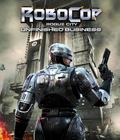
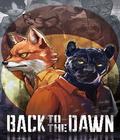
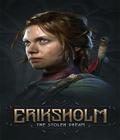
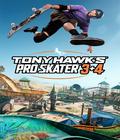

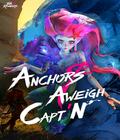
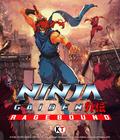
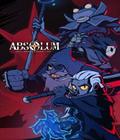

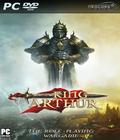 King Arthur is a turn-based empire-building strategy game set in a medieval, mystical Britain where you will play the role of legendary Arthur, the Once and Future King. You build Camelot, enlist the Knights of the Round Table, unite the country and ultimately challenge the powers threatening the essence of all their previous endeavors.
King Arthur is a turn-based empire-building strategy game set in a medieval, mystical Britain where you will play the role of legendary Arthur, the Once and Future King. You build Camelot, enlist the Knights of the Round Table, unite the country and ultimately challenge the powers threatening the essence of all their previous endeavors.